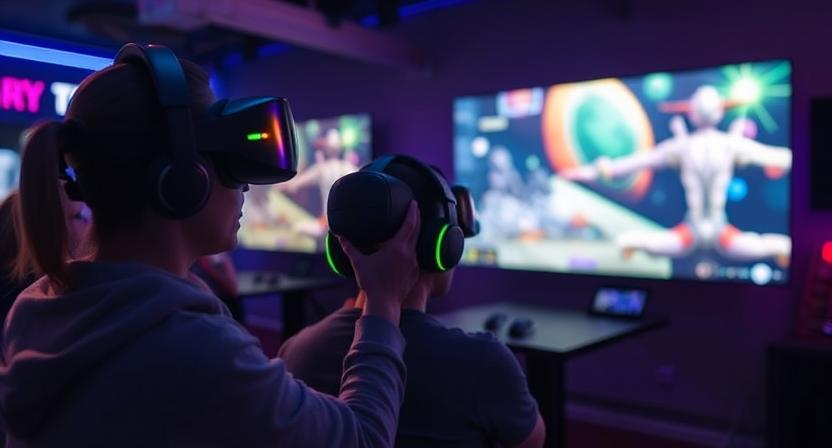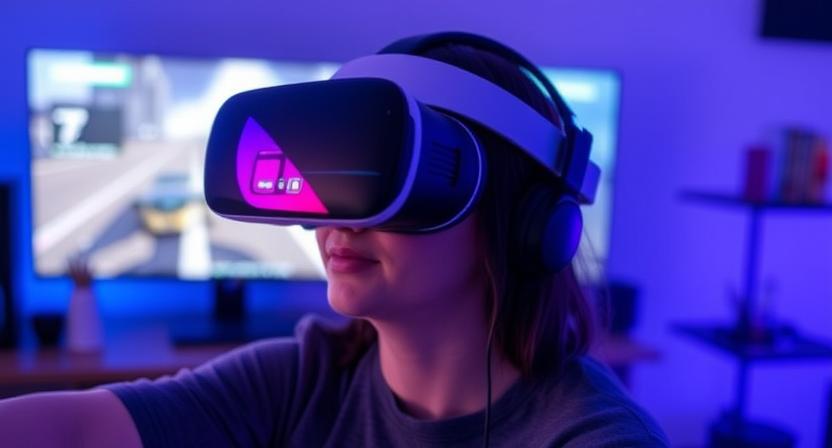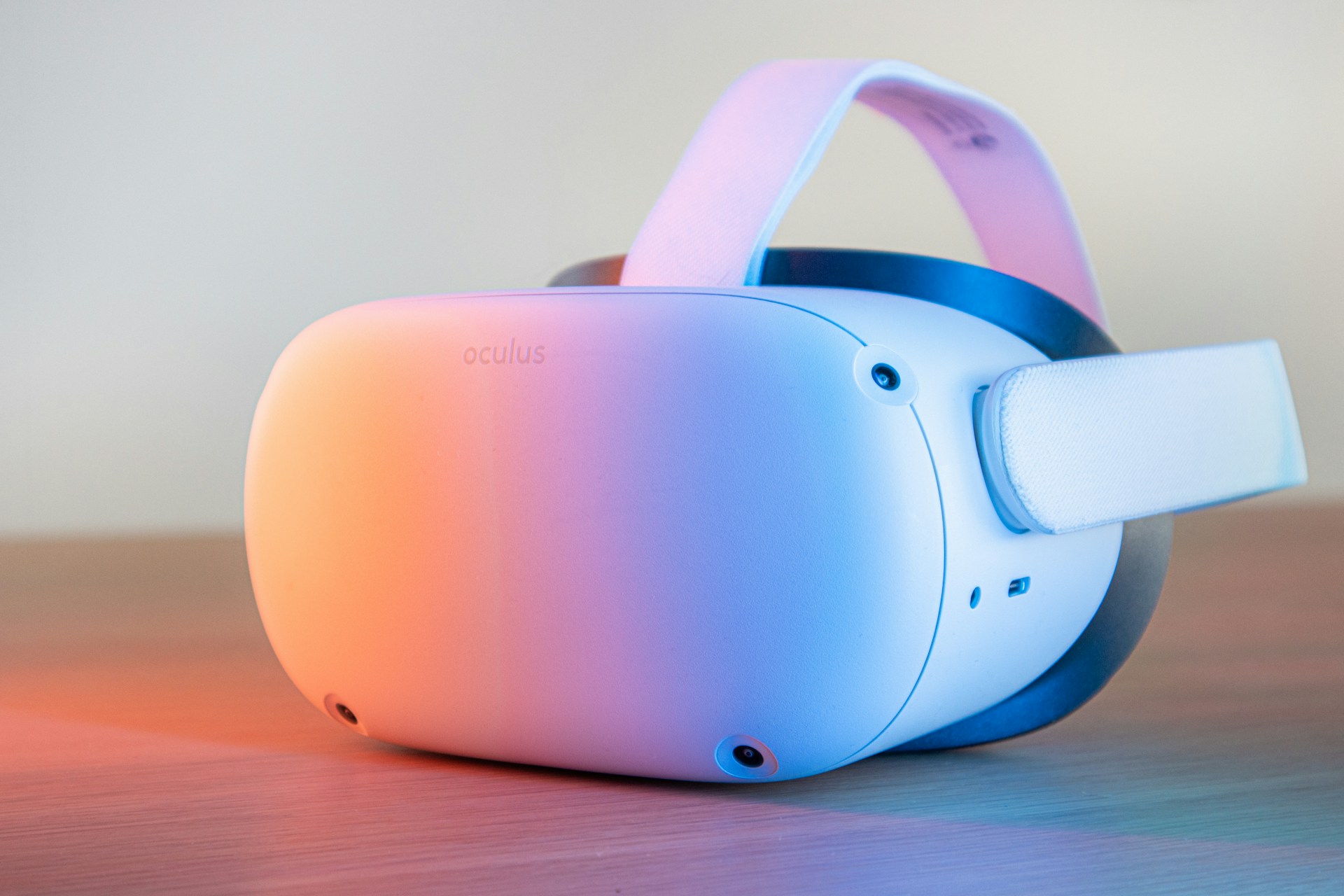Virtual Reality Gaming: A Brief History

The concept of virtual reality gaming dates back to the late 20th century when primitive forms of VR technology were being explored for entertainment purposes. Early attempts at creating immersive virtual worlds involved basic headsets and rudimentary graphics, offering a glimpse into the potential of this groundbreaking technology. However, it wasn’t until the early 2010s that VR gaming truly started to gain traction with the introduction of more advanced VR headsets and interactive experiences.
As technology continued to evolve, the capabilities of VR gaming expanded, leading to more realistic and immersive gameplay. The development of sophisticated motion-tracking systems and high-resolution displays further enhanced the VR gaming experience, allowing players to feel fully immersed in virtual environments like never before. Today, virtual reality gaming has become a mainstream form of entertainment, with a diverse range of games and experiences available across various platforms.
Advancements in VR Technology
Recent advancements in virtual reality (VR) technology have propelled the gaming industry into a new realm of immersive experiences. Innovations such as higher-resolution displays, improved tracking systems, and more ergonomic controllers have significantly enhanced the overall quality of VR gameplay. These technological strides have allowed players to feel more connected to the virtual worlds they inhabit, blurring the lines between reality and fantasy.
Furthermore, the development of wireless VR headsets has provided users with greater freedom of movement, eliminating the constraints imposed by traditional wired setups. This newfound mobility has not only increased the comfort level of players but has also expanded the potential for more dynamic and engaging gameplay mechanics. As VR technology continues to evolve, we can expect to see even more groundbreaking advancements that will further revolutionize the way we experience and interact with virtual environments.
The Impact of VR on the Gaming Industry
The introduction of virtual reality (VR) technology has undoubtedly revolutionized the gaming industry, offering players a whole new level of immersion and interaction. By transporting gamers into vivid and realistic virtual worlds, VR has heightened the gaming experience, making it more engaging and captivating.
Furthermore, the integration of VR in gaming has not only opened up a new dimension of entertainment but has also spurred innovation and competition among game developers. With the demand for high-quality VR content on the rise, developers are constantly striving to push the boundaries of technology to deliver cutting-edge experiences that captivate players and keep them coming back for more.
Popular VR Gaming Platforms
When it comes to popular VR gaming platforms, Oculus Rift stands out as a frontrunner in the market. Developed by Oculus VR, a subsidiary of Facebook Inc., the Rift offers immersive experiences with its high-resolution display, precise tracking, and ergonomic design. With a vast library of games and experiences available on the Oculus Store, this platform has garnered a dedicated fan base and continues to push the boundaries of virtual reality gaming.
Another prominent VR gaming platform is the HTC Vive. Produced by HTC in collaboration with Valve Corporation, the Vive distinguishes itself with its room-scale tracking technology and a wide field of view. Through its partnership with Steam, one of the largest digital distribution platforms for PC gaming, the Vive offers a diverse selection of VR content, ranging from action-packed games to interactive simulations, making it a popular choice among enthusiasts and gamers alike.
VR Gaming Trends to Watch Out For
One of the key trends to watch out for in the realm of virtual reality gaming is the rise of standalone VR headsets. These devices offer users the freedom to experience immersive gameplay without the need for a high-powered PC or console. With leading companies investing in standalone VR technology, we can expect to see an increase in the accessibility and adoption of VR gaming among a wider audience.
Additionally, the integration of haptic feedback technology is set to revolutionize the immersive experience in VR gaming. By providing tactile sensations such as vibrations and force feedback, haptic feedback enhances the realism and engagement of virtual environments. As developers continue to explore the potential of haptic feedback in VR gaming, we can anticipate more dynamic and interactive gameplay experiences that blur the lines between the virtual and physical worlds.
The Role of VR in Immersive Entertainment

Virtual reality (VR) has become a pivotal component in the realm of immersive entertainment, offering users an unparalleled experience that transcends the boundaries of traditional gaming. By transporting players into meticulously crafted virtual worlds, VR technology enables a level of engagement and immersion that was previously unattainable. This immersive nature of VR gaming allows individuals to escape reality and delve into fantastical environments where they can interact with the digital landscape in a way that feels incredibly lifelike.
Moreover, the role of VR in immersive entertainment extends beyond gaming, as the technology has found applications in various sectors such as cinema, tourism, and even virtual social gatherings. In the realm of cinema, VR has opened up new avenues for storytelling, allowing viewers to be active participants in the narrative rather than passive observers. Similarly, the tourism industry has leveraged VR to offer prospective travelers a virtual preview of destinations, enhancing their decision-making process and providing a glimpse into their potential vacation experiences.
Challenges Faced by VR Gamers
One prevalent challenge faced by VR gamers is the issue of motion sickness. The disconnect between visual inputs and physical movements can lead to feelings of nausea and discomfort for some players, hindering their ability to fully immerse themselves in the virtual world. This issue has prompted developers to explore new solutions, such as adjusting frame rates and incorporating comfort settings, to make the VR experience more accessible and comfortable for a wider range of users.
Another common challenge is the high cost associated with VR technology. Purchasing VR headsets, controllers, and compatible hardware can be a significant investment, limiting access to this immersive gaming experience for many consumers. Additionally, the need for adequate space to set up a VR gaming environment can be a constraint for those living in smaller accommodations. As the technology continues to evolve and become more mainstream, efforts are being made to address these cost barriers and make VR gaming more affordable and accessible to a larger audience.
The Evolution of VR Headsets
Virtual reality (VR) headsets have undergone a significant evolution since their inception. Early iterations of VR headsets were bulky and lacked the sleek design and comfort features that are prevalent in modern models. These earlier versions often faced criticism for causing discomfort and motion sickness, hindering the overall immersive experience for users.
As technology advanced, VR headset manufacturers began focusing on improving the visual quality, reducing latency, and enhancing ergonomic design. The introduction of higher resolution displays, wider field of view, and improved tracking systems revolutionized the VR gaming experience. Additionally, the integration of features like adjustable head straps, lightweight materials, and built-in audio solutions contributed to making VR headsets more user-friendly and appealing to a broader audience.
The Future of VR Gaming: Predictions and Speculations
As we gaze into the crystal ball of virtual reality (VR) gaming, one can predict a future filled with even more immersive experiences and innovative technologies. With the continuous advancements in VR headsets and accessories, players can expect to be transported into more realistic and interactive virtual worlds, blurring the lines between the physical and digital realms.
Furthermore, the merging of VR gaming with other technologies such as artificial intelligence and haptic feedback systems is likely to revolutionize gameplay, making it more engaging and lifelike than ever before. As game developers harness the power of VR to create captivating narratives and mind-bending environments, players can anticipate a gaming landscape that will challenge their senses and perceptions, creating a new era of entertainment and escapism.
VR Gaming Accessories to Enhance the Experience
When it comes to enhancing the immersive experience of virtual reality gaming, the right accessories can make all the difference. From motion controllers that allow for more intuitive interactions within the virtual world to haptic feedback devices that bring a sense of touch to gameplay, there are a variety of accessories available to enhance the overall VR experience. These accessories not only add another layer of engagement to gaming but also help to bridge the gap between the physical and virtual realms, making the experience even more captivating.
Another essential accessory for VR gaming is a quality headset with integrated audio. Spatial audio is a key component of the immersive experience in virtual reality, and a headset that can accurately reproduce directional sound can greatly enhance the sense of presence within the virtual environment. Additionally, having a comfortable and well-fitted headset is crucial for extended gaming sessions, as it can help prevent discomfort and fatigue, allowing players to fully immerse themselves in their virtual adventures.
The Rise of Social VR Gaming

Social VR gaming has witnessed a surge in popularity as players seek more interactive and engaging experiences. By creating virtual worlds where gamers can interact, collaborate, and compete in real time, social VR gaming platforms offer a dynamic space for connecting with friends and strangers alike. Through the use of avatars and voice chat features, players can communicate and form relationships across vast distances, fostering a sense of community within the virtual realm.
The collaborative nature of social VR gaming has transformed traditional solo gaming experiences into shared adventures where teamwork and communication are key to success. Whether embarking on virtual quests together, participating in multiplayer battles, or simply exploring immersive environments side by side, social VR gaming has introduced a new dimension of connectivity and camaraderie to the gaming landscape. As technology continues to advance and virtual worlds become increasingly sophisticated, the potential for social VR gaming to revolutionize how we interact and engage with others in digital spaces remains vast and promising.
The Influence of VR on Game Design
Virtual Reality (VR) has revolutionized the way game designers approach their craft. The immersive nature of VR technology allows for a more intimate and interactive gaming experience, prompting developers to rethink traditional game design principles. Designers are now challenged to create environments that not only look visually stunning but also seamlessly engage the player’s senses and emotions, ultimately enhancing the overall gaming experience.
Moreover, the unique capabilities of VR have inspired game designers to explore new gameplay mechanics and interaction methods. From innovative control schemes to creative ways of storytelling, VR has pushed designers to think beyond the confines of conventional gaming paradigms. The spatial awareness and depth perception afforded by VR have led to the creation of games that offer players a heightened sense of presence and agency within the virtual world, blurring the lines between reality and the digital realm.
Exploring VR Arcades and Theme Parks
VR arcades and theme parks have quickly become popular destinations for gamers looking to experience immersive virtual worlds. These venues offer state-of-the-art VR technology that allows players to step into a different reality and engage in exciting gameplay. From shooting zombies in a post-apocalyptic world to exploring fantastical realms, the possibilities in VR arcades are endless, making them a thrilling choice for individuals seeking a unique gaming experience.
The appeal of VR arcades and theme parks lies in their ability to transport players to worlds beyond their imagination. These locations often feature a variety of games and experiences to cater to different preferences, whether it’s thrilling adventures, competitive sports simulations, or creative sandbox environments. With the advancement of VR technology, these venues continue to push the boundaries of what is possible in the realm of virtual reality gaming, offering visitors a chance to escape reality and immerse themselves in captivating digital realms.
VR Gaming for Education and Training
Virtual reality (VR) gaming has extended its reach beyond entertainment to the realm of education and training. With immersive experiences and interactive simulations, VR technology has revolutionized traditional educational approaches by providing a dynamic and engaging learning environment. Students can delve into virtual worlds, experiencing historical events, exploring scientific concepts, and even practicing real-life scenarios in a way that bridges the gap between theory and application.
Furthermore, the use of VR in training programs has proven to be highly effective in various industries. From medical simulations that allow healthcare professionals to hone their skills in a risk-free environment to virtual job training that prepares individuals for diverse professions, VR technology offers a hands-on approach that enhances learning retention and practical application. By immersing users in realistic scenarios and providing immediate feedback, VR gaming for education and training has the potential to revolutionize traditional educational methods and professional development practices.
The Intersection of VR Gaming and eSports
Esports has witnessed a surge in popularity over the years, with professional gamers competing in various tournaments and leagues. With the advancement of virtual reality (VR) technology, the intersection of VR gaming and esports has opened up a new realm of possibilities for both players and viewers alike. This convergence brings a fresh perspective to competitive gaming, offering a more immersive and engaging experience.
VR technology allows players to transport themselves into virtual worlds, where they can interact with the environment in a more physical and intuitive way. This level of immersion adds a new dimension to competitive gaming, requiring players to rely on both their physical skills and mental agility in a way that traditional esports cannot replicate. As VR gaming continues to evolve and gain traction, it is anticipated that the intersection with esports will lead to the emergence of new tournaments and leagues dedicated to VR-based competitions, further pushing the boundaries of competitive gaming.
Accessibility in VR Gaming

Ensuring accessibility in virtual reality gaming has become a crucial focus for developers in recent years. One key aspect involves addressing physical limitations that may hinder some individuals from fully engaging in VR experiences. By incorporating features like customizable controls, adjustable movement speeds, and options for seated gameplay, developers are striving to make VR gaming more inclusive for all players.
Visual impairments present another challenge in creating an accessible VR gaming environment. To cater to individuals with various degrees of visual impairment, developers are implementing features such as high contrast settings, text-to-speech functionalities, and audio cues to provide alternative modes of interaction within VR games. By making these adjustments, the goal is to make virtual reality gaming a more enjoyable experience for a broader range of players, regardless of their physical abilities or visual acuity.
The Ethical Concerns of VR Gaming
The immersive nature of virtual reality (VR) gaming has sparked discussions surrounding various ethical concerns. One key issue is the potential for users to become addicted to VR experiences, leading to detrimental effects on their mental health and overall well-being. With VR technology offering incredibly realistic and engaging environments, there is a risk of individuals becoming too engrossed in these virtual worlds, neglecting their responsibilities in the physical realm.
Another ethical consideration is the impact of violent or inappropriate content in VR games on players, particularly concerning its effects on younger users. As VR gaming becomes more mainstream, there is a growing concern about the potential desensitization to violence and the blurring of lines between reality and virtual experiences. Ensuring that content creators exercise responsibility in depicting and presenting such content is crucial to mitigate any negative repercussions on players, especially in terms of desensitization, aggression, or desensitization to violence.
Innovations in VR Content Creation
One of the exciting aspects of virtual reality (VR) is the continuous innovation in content creation methods. Content creators are constantly exploring new ways to enhance the immersive experience for users. From interactive storytelling to photorealistic graphics, VR content is evolving to offer more realistic and engaging environments.
Technological advancements have played a crucial role in improving the quality of VR content. The development of 360-degree cameras, motion tracking sensors, and haptic feedback systems has enabled creators to push the boundaries of what is possible in the virtual realm. These tools allow for more realistic simulations and interactive experiences, providing users with a truly immersive journey into the virtual world.
The Integration of Augmented Reality in VR Gaming
Augmented reality (AR) and virtual reality (VR) are two distinct technologies that are increasingly being combined to create a more immersive gaming experience. By integrating AR elements into VR gaming environments, developers are able to overlay digital content onto the real world, enhancing the user’s perception of their surroundings within the virtual realm. This integration allows gamers to interact with both physical and digital elements simultaneously, blurring the lines between the real and virtual worlds.
One of the key advantages of integrating AR into VR gaming is the ability to provide users with a more interactive and engaging experience. By superimposing virtual objects onto the real world, players are able to manipulate and interact with their surroundings in ways that were previously not possible with traditional VR experiences. This fusion of AR and VR technologies opens up a new frontier of possibilities for game developers, enabling them to create more dynamic and immersive gaming environments that respond to the player’s interactions in real-time.
The Potential Impact of VR Gaming on Society
Virtual Reality (VR) gaming has the potential to significantly impact society in various ways. One key area is the influence on social interactions and relationships. With the ability to immerse players in realistic virtual environments, VR gaming could alter the way people connect and communicate with each other. It may lead to new forms of social interaction, enabling individuals to engage in shared virtual experiences regardless of physical distances.
Moreover, the healthcare sector could also see a transformative effect from VR gaming. The use of virtual reality technology in therapeutic settings has shown promising results in treating various mental health conditions such as PTSD and anxiety disorders. By providing immersive and interactive experiences, VR gaming has the potential to revolutionize traditional therapeutic approaches, offering new avenues for mental health support and rehabilitation.




